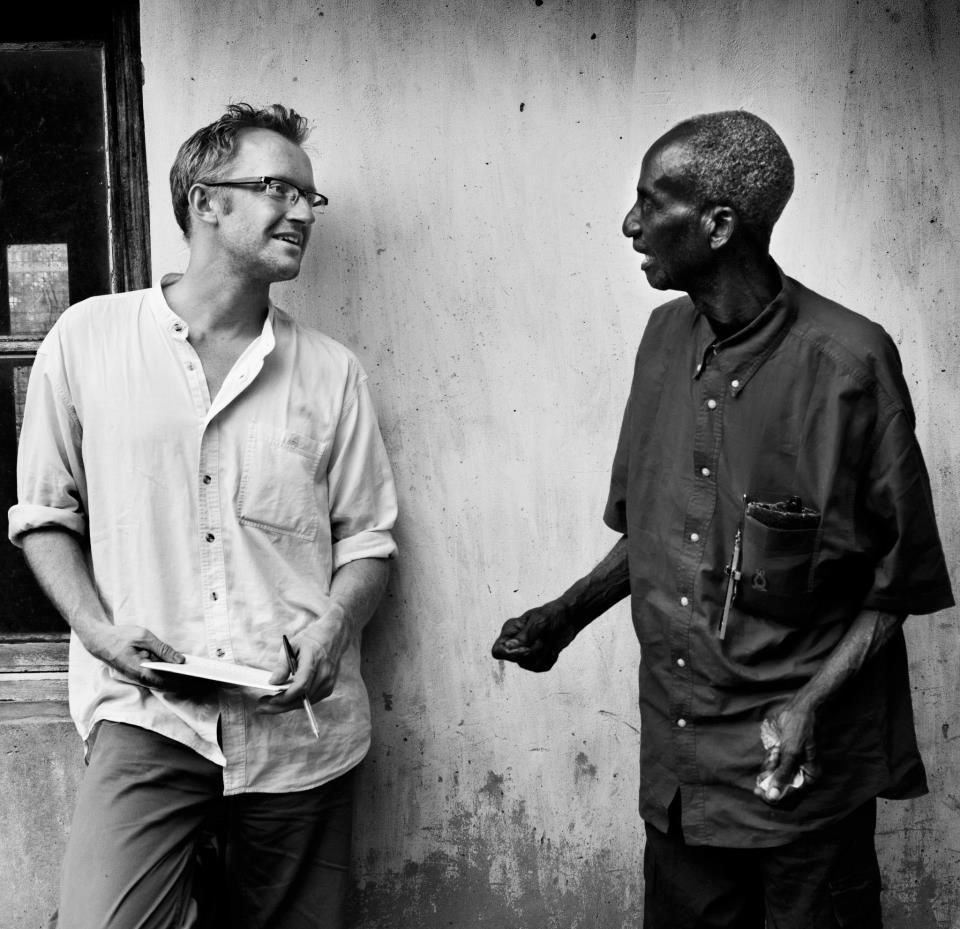Belgium, Literature, 2016
David
van Reybrouck

Shortly after the Congo won independence from Belgium in 1960, the son of a Belgian farmer decided to work as a railroad engineer in the country that had suffered terrible exploitation at the hands of his ancestors for over a century. He stays in the Congo for five years; to his own son – we are referring now to David Van Reybrouck – he will reveal little about his experiences in the country.
The Congo and Africa will later become a kind of Shangri-La for Reybrouck, or at least to the place that shapes his literary texts more than any other. Born in 1971 in Bruges and with a doctorate in archeology, David Van Reybrouck published his first novel De Plaag (The Plague, in Flemish) when he was 30 years old. In the novel, the first-person narrator, who bears an unmistakable similarity to the author, portrays trips he makes in South Africa in pursuit of the truth behind plagiarism accusations he stumbled upon years earlier in a newspaper article. According to the scandalous claims made in the article, the Belgian Nobel Prize winner Maurice Maeterlinck supposedly copied the groundbreaking insights contained in “The Life of Termites” from a long-forgotten South African researcher named Eugène Marais. What seemingly starts out as historical research is gradually revealed to be a series of critical, complex moments in time in contemporary South Africa, a nation caught between its struggle to overcome the past and the challenges posed by new problems such as AIDS and the increase in crime. By the end of the book, the reader learns that David Van Reybrouck’s alter ego is not only the first-person narrator but also Eugène Marais; like Van Reybrouck, Marais is a man with a multitude of voices, that of the writer, the poet, journalist, scientist, and seeker of the truth. More fact than fiction, The Plague is impressive for its literary qualities, with the depth and dramatic arc of a novel, entirely indebted to the Aristotelian imperative to keep goodness, beauty, and truth in harmony. From that point on, David Van Reybrouck’s work can be characterized by its ability to dispose of boundaries and blend genres; in his first book, he deftly mixes autobiographic details with historical facts, which are always thoroughly researched. His generation is the first that re-learned how toself-confidently use first-person narrative in journalistic texts, thus creating a whole from the parts with the help of speculative realism. The central theme throughout is History with a capital “H,” which he makes accessible to his readers with captivating stories. He proved himself above all with his second work, the monumental Congo. A History, which received worldwide acclaim and many important prizes. For good reason: David Van Reybrouck, who conducted research in the country on ten trips, offers the reader not just 150 years of Congolese history, beginning in the Colonial era and ending in the present, in 2000; instead, he offers history from below, from a chorus of voices that includes all backgrounds, from war veterans, to child soldiers, adherents of different political parties, to businessmen and artists, all based on numerous interviews that he conducted in Congo. These are interspersed with passages describing the natural landscape and first-person accounts that never degenerate into mere anecdotes or lurid tales, instead they show the cool stance of the neutral observer. The effects of this collage are striking: the reader hears the Congo speaking in its entire complexity; the network encompasses the culture of everyday life, economics, international politics, tension between ethnicities, the connection between social orders, the individual, and nature. Suddenly, the Congo becomes much more than the “dark heart of Africa.” Though subject to criticism for his use of texts from other authors, David Van Reybrouck’s method nonetheless is perhaps the only one suitable for writing about the continent today, at a time when our image of Africa, and Africa itself, has become porous due to the enormous changes it is undergoing. The polyphony deployed by the author contains strong echoes of the procedure used by the South African Truth Commission, which believed as a matter of principle that justice could only be achieved when everyone is entitled to speak, and no single voice dominates over the others. David Van Reybrouck also uses a monologue consisting of many voices in his plays, such as “Mission,” which premiered in Belgium in 2007 and has toured through Europe since then, with performances at the Theatertreffen in Berlin, for example. Based on interviews with Catholic missionaries in the Congo, the play offers the viewer not only sobering close-ups of a country, but also brings the religious profession out from the shadows of Colonialism and into the light of day. Some say he misrepresents history, while others praise the author for his bold critical stance. The author is certainly active, in every sense of the word: he organized workshops for local writers in Congo, while in 2009, he published the “The European Constitution in Verse” in collaboration with over 50 authors and poets. In 2011, he founded the platform for democracy known as G1000; this was followed by his 2013 polemic titled “Against Elections,” in which he advocated re-introducing the ancient practice of sortition in order to save democracy. Following the attacks in Paris on November 13, 2015 – in which the trail led to David Van Reybrouck’s hometown of Brussels – he criticized the jingoistic rhetoric of President François Hollande in a sharp-tongued letter. Whatever the reader may thinks about this pugnacious intellectual, one thing is certain: for Van Reybrouck, literature serves first and foremost to enlighten.
Text: Claudia Kramatschek
Translation: Amy Pradell
Congo. A History. Translated from the Dutch by Waltraud Hüsmert. Suhrkamp Verlag, Berlin 2012.



